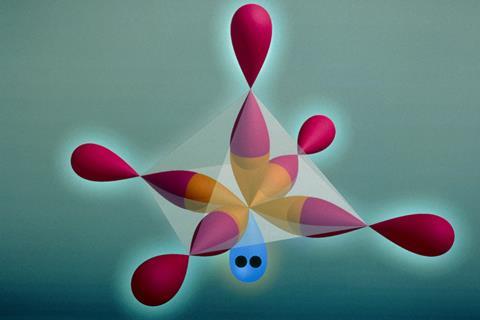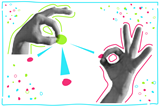Use the latest research to help your students form correct mental images when predicting molecular geometries

Visuospatial thinking – the forming and manipulating of mental images – is vital for chemists and other scientists, but little is known about how to support students to develop it.
A recent study examined some of the approaches chemistry students apply when predicting molecular geometries. The results provide strategies for educators to support students with forming mental images, which could improve teaching and widen access to science.
Previous studies have reported that students use analytical and diagrammatic reasoning in tandem with imagistic reasoning. Key to visuospatial thinking, imagistic reasoning involves generating and manipulating representations in the mind, such as when visualising sub-microscopic structures in 3D. Analytical strategies such as VSEPR theory provide a step-by-step algorithm, while diagrammatic strategies involve diagrams. These alternative ways of reasoning are also important as they act as offloading strategies that free up cognitive resources, which improves students’ capacity for learning.
Drawing out students’ reasoning
The team explored how high school students used these strategies in a task asking for sketched diagrams and written answers.
Analysis revealed that students who used VSEPR when formulating their answers achieved a similar number of correct answers to those who hadn’t. However, there was a significant difference in the correctness of written and diagrammatic responses between the two groups. Those who did use VSEPR gave more correct written responses, while those who didn’t use VSEPR gave more correct diagrammatic responses.
The findings of this study should be considered by assessment boards and those responsible for producing exams. The emphasis on written responses in exams might be problematic for students who rely on diagrammatic approaches. For example, two students whose diagrams were more than 90% correct gave written responses that were less than 40% correct. In an exam, this would compromise their mark. Traditional assessment approaches do not necessarily credit students for their understanding of 3D concepts and visuospatial thinking.
Teaching tips
- Encourage students to draw diagrams as part of their introduction to VSEPR theory and molecular shape. Whiteboards can support formative assessment either by the teacher or peers.
- Explicitly use dot-and-cross diagrams to support the analytical processing involved in VSEPR. These diagrammatic representations can be a more helpful way to count electrons.
- Model sketching 3D representations of predicted molecular geometries for students with weaker visuospatial abilities by showing how to draw dash-wedge representations. This will reinforce mental visualisation before introducing VSEPR theory.
- Use visual guides to support students with high visuospatial ability. These students might favour imagistic approaches, but need to be able to apply accurate geometric terminology to 3D diagrams to meet exam requirements.
- Analyse students’ sketches to provide insight into their visuospatial and analytical thinking. The process of sketching itself can be valuable in supporting deeper learning. Bear in mind that apparently accurate drawings may not reflect a solid conceptual understanding.
References
N A Kiernan, A Manches and M K Seery, Chem. Educ. Res. Pract., 2021, DOI: 10.1039/d0rp00354a














2 readers' comments